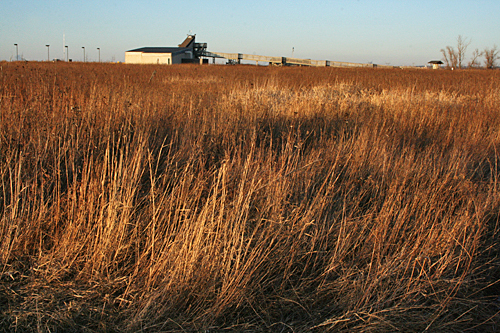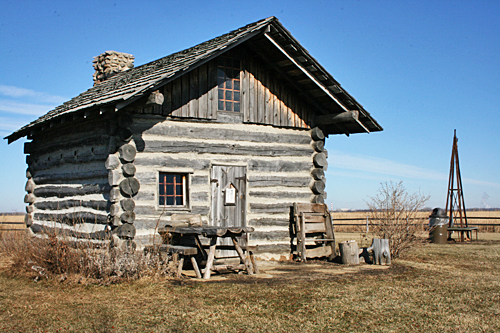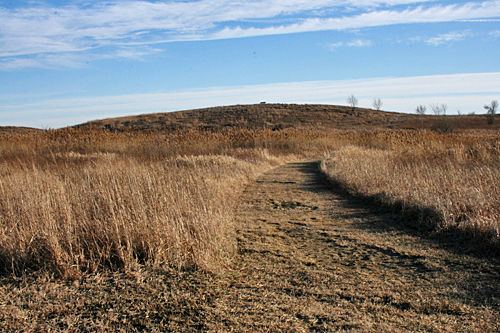I saw them before I heard them. On the distant horizon a line of tiny black specks appeared in the crystal blue sky. From their classic ‘V’ formation I knew they were Canada Geese. As I watched, thousands more rose from behind the distant treeline that marked the river, broke into smaller flocks, and circled to get their bearings. Wave after wave flew overhead, filling the sky with their dark silhouettes and the air with their strident, guttural honking.

It is nearly 4 p.m. and all around me the prairie grasses of Goose Lake Prairie State Natural Area are turning to burnished gold in the setting sun. I wonder why the geese have waited until the day’s end to take flight. Do they always travel after dark? Perhaps they fly at night so they can spend the day feeding. And why have they waited until January to head south? This seems late to me. Whatever the reason for their late migration, I am grateful to have been witness to this glorious sight.
Close encounters with nature are the norm rather than the exception at Goose Lake Prairie. Located in Morris, Illinois, between the confluence of the Kankakee and Des Plaines Rivers, this 2,537 acre park is the largest remnant of prairie left in Illinois. This area of Illinois was part of a vast grassland that once stretched from Indiana to the Rocky Mountains and from Canada to Texas.
The prairies were created by glaciers that flowed across the continent several times during the last 1.6 million years. These massive sheets of ice scraped away hills, filled in valleys, and carved out the basins for the Great Lakes. When the last glacier retreated more than 14,000 years ago it left behind deposits of rock, sand, and rubble known as glacial moraines. The moraines acted like dams, backing up water from the melting ice. Eventually the rising water breached the moraine and scoured the area, washing away all the land down to bedrock and covering the area in a shallow inland lake. Clay, silt, and fine sand settled out of the water, creating a thin layer over the bedrock. Over time, the climate grew warmer and the lake dried out, leaving a landscape that could only support prairie grasses and flowers.

As settlers arrived, the remaining area lakes were drained to gain more farmland, but fortuitously, even after draining Goose Lake Prairie was far too wet to plant crops on. Visiting the park today is much like seeing the prairie as it was 150 years ago. Tall prairie grasses, make up 60 percent of the prairie and the flowering plants that comprise the remaining 40 percent burst into bloom each spring. Wildlife sightings include include deer, coyote, red fox, cottontail rabbit, muskrat, beaver and badger.

Even in the dead of winter the park has a certain charm. For four hours today I walked its seven miles of trails, traversing prairie flatlands and passing by glacier-scoured pothole lakes. From atop the reclaimed strip mine hills that are the highest spot in the park I spotted a herd of deer casually grazing on the tall brown grasses. Despite temperatures that hovered just below freezing, the scenery was so beautiful and the serenity so profound that I barely noticed the cold. And while Illinois is not my cup of tea, I must admit that there is a very special kind of beauty in its prairies.

Thank you for the neat hunting advice. I appreciate it. Thank you again!
I hunt there and let me tell you… It is magical to see this place come to life in the morning. The hawks in flight, owls, pheasants, coyotes, and the deer. Open prairie hunting at its finest… A very nice place to visit to boot.
Beautiful post and photos, I immediately wanted to pack my bags and wander the prairies with you. That is until I read your post about winter in the mid-west.
Each place and each season has its own beauty, that’s for sure! I enjoyed your info re: the glaciers, etc. and how the prairies formed. Fascinating stuff! Amazed to see all the snow gone up there…